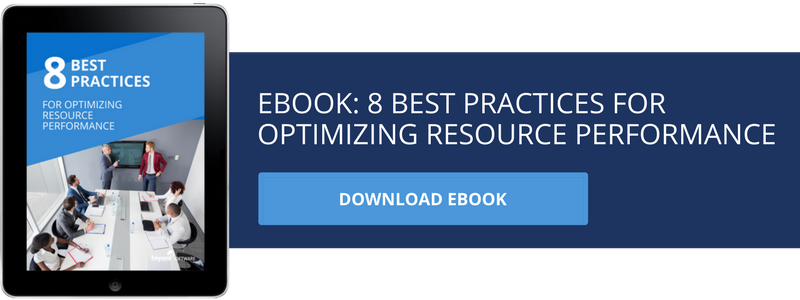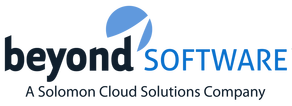As long as the money coming IN is greater than the money going OUT, companies rest easy with the thought their business will survive. Positive cash flow is a basic prerequisite to a healthy company. Without it, nothing else matters. The size and velocity of cash flow determines working capital requirements and can either facilitate or hinder growth of the business.
Cash Flow - It's Not Just Money In And Out
A healthy cash flow is dependent upon the careful monitoring and management of the customer billing/cash receipts and vendor purchase/payment processes. Chances are you already know this because either you are experiencing great success with a healthy cash flow…or you’re struggling to pay your bills on time and trying to figure out WHY.
The challenge in managing a healthy cash flow is understanding that cash flow includes receivables AND payables. If you understand the priority for managing money IN and OUT, you can turn a poor cash flow into a healthy cash flow with some simple changes to your business processes. Waiting too long to implement these changes can place an unwanted strain on your business, and left unattended leads to the demise of many companies.
Why do companies fail to make payments on time, resulting in late fees and finance charges? Sometimes they assume their vendors bill them using the same bi-monthly cycle they use for their customers, which often is not the case. Eliminate this risk by aligning your receivables and payables department.
Let’s look at a few simple changes anyone can make.
1. Bill for completed work as soon as you can.
Depending on the contracts you’ve signed with your customers, you may have hard guidelines dictating when, and how much, you can invoice a customer. Looking past that scenario, if your work allows you to determine the best time to bill, a good rule of thumb is to bill whenever you have the ability to do so.
With many companies, especially startups, the receivables department establishes the schedule for billing customers, which typically results in a monthly or bi-monthly billing cycle. This allows the receivables department to know when to generate invoices. From this, they can anticipate when customers might call about their invoices and when they might expect to receive payment (based on the payment terms). While, this might sound like an organized plan, let’s take a closer look to see if this is the best approach for optimizing cash flow.
The receivables department is feeling very organized. Their plan feels solid and addresses the money IN side of cash flow. What’s lacking is the coordination with the money OUT portion of cash flow. As a business leader, you may need to look across the organization to see how the well-organized billing process aligns with the payables department. Payables receive vendor invoices daily and upon receipt, the clock starts ticking for when those payments are due. Failure to make those payments on time can result in late fees and finance charges, which leads to more money OUT.
Why does this happen?
The simple answer is this occurs when companies assume their vendors bill them using the same monthly or bi-monthly cycle they use for customers. This is often not the case. Many vendors bill as soon as the goods ship or upon delivery of the goods. The payables department knows when they can expect receipt of goods and when they need to pay for them.
Their ability to make those payments is dependent on the timing of the receivable payments. If you have a misalignment between the two departments because your vendors are billing you at a rate faster than you are billing your customers, you may face the likelihood of paying money OUT faster than the rate it is coming IN.
You can remedy this by changing your billing process to bill as soon as possible in order to reduce the number of days your project investments remain unbilled and unpaid. By billing your customers as work is completed, you start the clock ticking, to receive payment, right away, rather than waiting to start the clock on a monthly or bi-monthly basis. Project accounting software allows the receivables department to keep close tabs on when work is complete and ready for billing. To refine the billing process further, you should monitor project progress on a more frequent basis, like daily or weekly.
With your receivables department optimized with your payables department, you’re making informed decisions across both team to increase the likelihood of being paid earlier, allowing you to make vendor payments earlier and eliminating risk of extra charges. Do this long enough and you’ll find your Money IN outpaces your Money OUT.
2. Verify that invoice details are correct before sending to the customer.
Along with tightening the time between project completion and billing, taking the time to make sure invoices contain the correct details before sending to the customer will save you time and money by not having to reverse, edit, and re-issue invoices after the fact. If a customer requires specific details to appear on an invoice in order to approve it, it is in the best interest of the project manager to understand these details up front so they can meet the customer requirements the first time. Failure to deliver invoice details expected by the customer can lengthen the time between billing and payment and create friction in the collection cycle. You also run the risk of reduced work with the customer in the future.
Project accounting software, designed to allow project managers/supervisors to review and edit time and expense details prior to approval, ensures the description of work performed meets the customer’s expectations at the time of the billing. Eliminating rework reduces intangible costs. Contract details dictate what level of information the customer is expecting to find on their invoices. Project managers/supervisors are responsible for making sure employees know what level of details they must capture when recording their time and expenses. Before sending an invoice to the customer, a minimum of three people usually view the details on that invoice: the employee, the manager/supervisor, and the receivables clerk sending the invoice.
Verifying correct invoice details ensures that the customer can quickly review and approve, meaning you get paid faster.
Project accounting software enables these resources to capture, review and process the invoice with accuracy. Providing the correct level of information results in a quick review and approval to pay the invoice at the customer site. This reduces the time between billing and payment and improves cash flow by shortening the time you can expect money IN from your customers.
3. Ensure the details of the work performed are captured at the time the work is completed.
Multi-year contracts typically designate at what point billings can occur – especially government contracts. Typically, you process these billings upon the completion of a milestone/phase or as defined to occur quarterly or semi-annually. The longer the duration between billing cycles, the more important it is that the employee captures the correct level of information the day the work occurs. For this reason, government contracts require daily time entry. Failure to enter time daily requires employees to enter a reason for late timecard entry. Don’t risk losing valuable details that ensure you will be paid for your services.
Imagine if you were unable to produce an adequate level of information for a six-month work period. You run the risk of nonpayment by the customer unless you can provide the information. If this occurs, you face a negative effect on your cash flow because you have already paid your employees and other expenses associated with the project, with no hope of payment. (No money IN and your money paid OUT.) This in turn can limit your ability to look at new projects. Recording the correct level of information as work occurs, removes the risk to your company.
It’s also important to capture time as you work on projects of shorter duration as well as in situations where an employee is working on multiple projects throughout the day. Daily time entry reduces the chance of time entry errors and eliminates time spent by the manager/supervisor in having to go back to the employee to obtain the details of their work. A project accounting solution that allows for the easy capture of time whether in the office or out in the field is essential to good time entry. With an efficient time entry process in place, you’ll be sure to deliver the correct level of detail with every invoice.
Implementing these few simple changes can have a dramatic impact on the money IN side of your cash flow. With an improved cash flow, company leaders can look at future opportunities differently. Where once you may have had to walk away from an opportunity because money was tight and you didn’t feel comfortable taking risks, now you may be able to convert an opportunity into additional business for the company. Having a healthy cash flow, with cash available to take on a few risks as you entertain new ideas, can be the single factor that determines whether you mange for sustainability, profitability or growth.
Implement these changes today and begin reaping the benefits of profitability and growth.
For additional information on Beyond Software please contact:
Nicole Holliday
nholliday@beyondsoftware.com
866-510-7839


